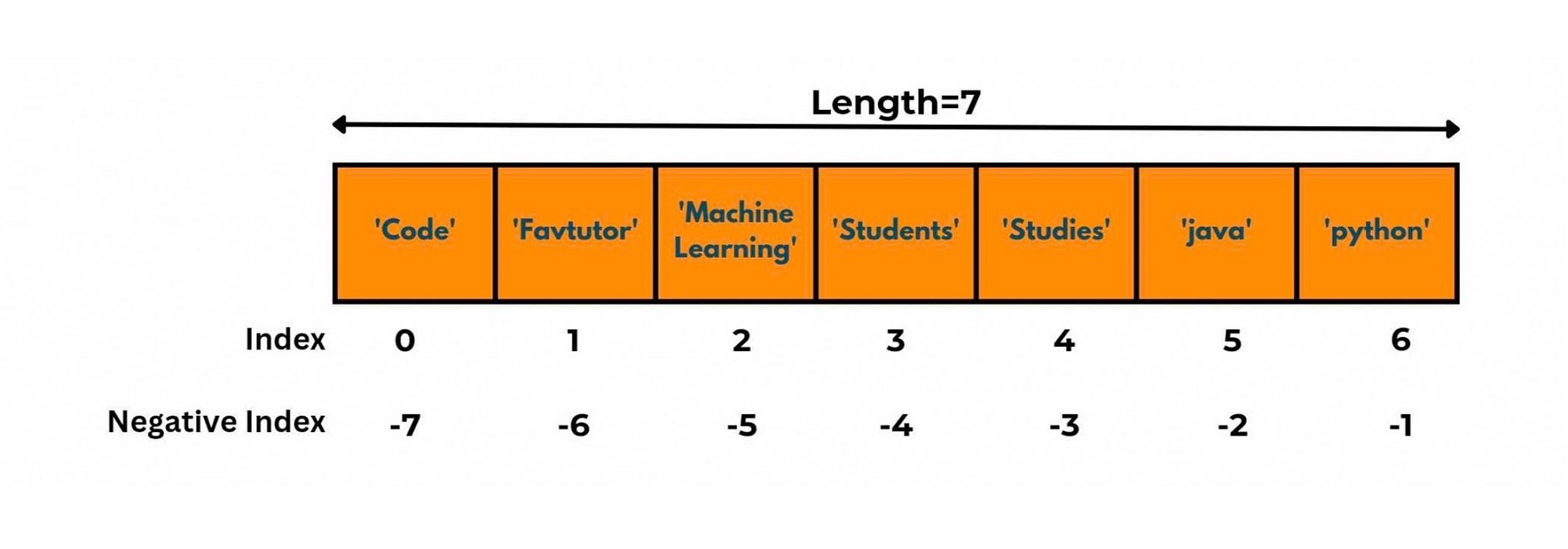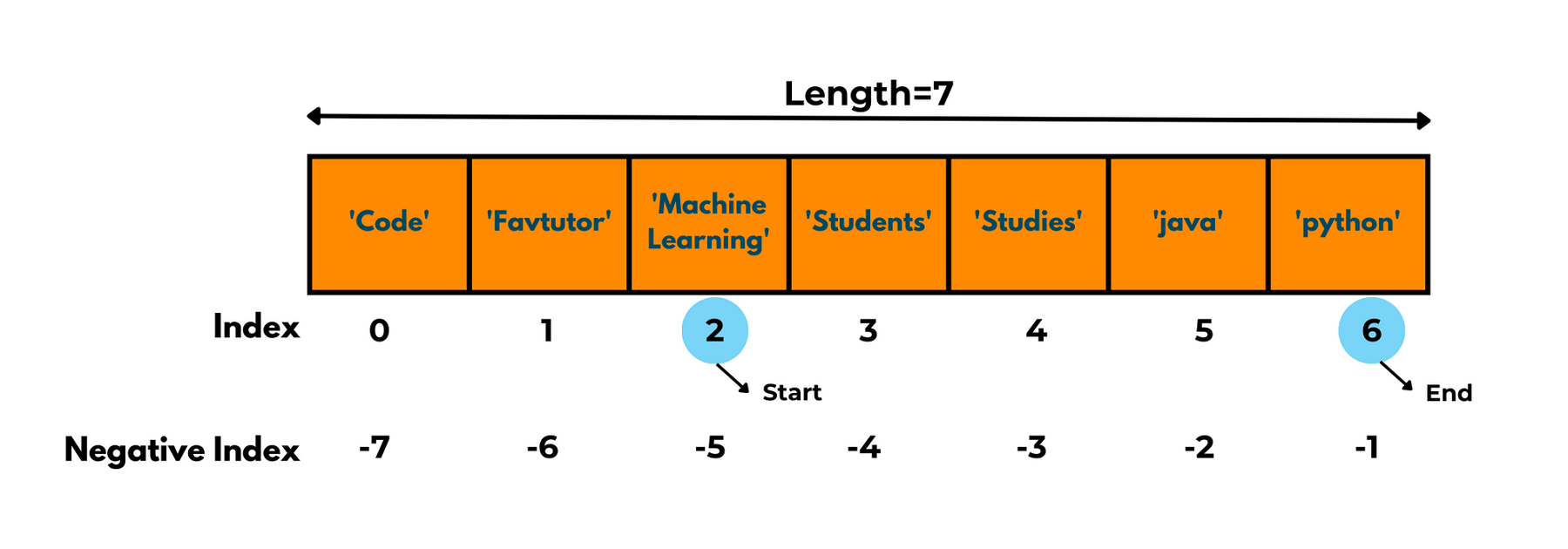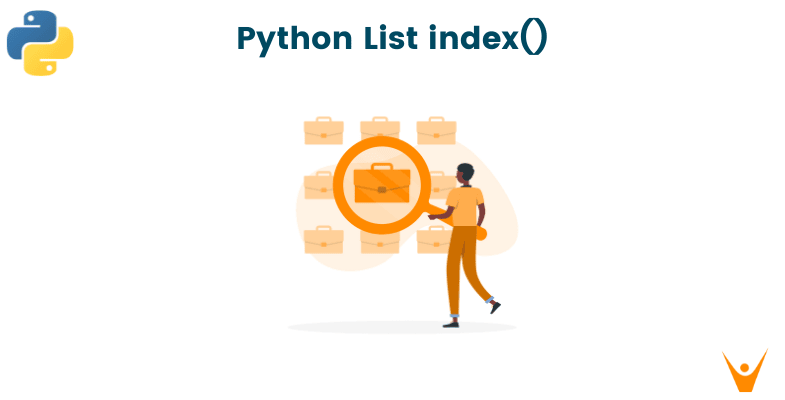In Python, the index() method is a powerful tool that allows you to find the position or index of a specific element in a list or string. This method simplifies the process of searching for an element, eliminating the need for manual loops or conditional statements. In this article, we will explore the syntax, parameters, and various examples of using the index() method in Python.
What is a List in Python?
Before diving into the details of the index() method, let's first understand the concept of lists in Python. Lists are a type of data structure that store a collection of heterogeneous items. They are one of the most commonly used data structures in Python and provide flexibility in storing and manipulating data.
A list in Python is defined by enclosing comma-separated elements within square brackets. For example:
favlist = [1, 'apple', True, 3.14]
In the above example, favlist contains four elements of different types, including an integer, a string, a boolean value, and a float. We can print a list using different methods like loops, join(), map, etc/
Lists in Python are ordered, meaning that the elements are stored in a specific sequence, and each element has a unique index associated with it. Indexing in Python starts at 0, so the first element in a list has an index of 0, the second element has an index of 1, and so on.
If you are confused between arrays and list, you can read Array vs List in Python.
What is a List Index in Python?
Each item in a list is assigned an index, which is a unique integer value that represents its position in the list. The first item in a list has an index of 0, the second item has an index of 1, and so on. It is a way to access an individual element in a list by its position or index number.
Keep in mind that list indexes always start from a 0 and go to the (n-1) value of elements. If the element that doesn't exist in the list using an index will result in an "IndexError".
Let's understand it with an example. We have the following list with seven values.

As in the above example, the list has seven names stored in it but the index goes from 0 to 6.
Now to access elements of a list we need to call specific elements from a list by referring to Indexes. Here is an example of that:
list=['Code', 'Favtutor', 'Machine Learning', 'Students', 'Studies', 'java', 'python'] print(list[0]) print(list[1])
Output:
Code Favtutor
In python, we use square brackets [ ] to call the elements of a list where inside the brackets we pass the index value of the location we want to read. It is our choice whether we can pass the positive index or negative index of an element; it will return the same desired output. For here if we call ‘list[-6]’ it will still return us the string ‘Favtutor’ as output.
How to find the index of an item in a List?
Let's look at several methods to get the python index of a list item:
1) Index() method
The simplest method to find the index of an item is by using the built-in index function. The index() method returns the index of the first occurrence of the item in the list. It takes the value of the search element as the argument and gives us the index of where it appears the first time in the list.
Here is the simple syntax of the index method:
list_name.index('item_name')
Index() function can have a maximum of 3 arguments out of which 1 is a mandatory argument and the rest can be optional:
- Element: Item name you want to search
- Start: Starting index to start the search for the element.
- End: Ending index to stop the search of the element after this index.
Look at the below code:
list=['Code', 'Favtutor', 'Machine Learning', 'Students', 'Studies', 'java', 'python'] print("index of Studies is",list.index('Studies')) print("index of java is",list.index('java',2,6))
Output:
index of Studies is 4 index of java is 5
The image will better illustrate this:

As you can see, we attempt to print the index at which a specific element is present. This is equivalent to locating the memory address for that value. In the initial printing statement, we only give the element name.
The Index() function then searches the entire list for the element and returns the index id if it is present. But, we have set the values of two optional parameters of the Index() function in the second printing statement, which essentially slices the list by that index and searches for the element in the new sliced list only, returning the index if it exists otherwise raising a ValueError.
2) Enumerate function
We can also use an enumeration for getting the index of a list item. It is a built-in python function that is similar to Index() function.
The only difference between them is that the Enumerate() function can return all the index positions at which a specific element is present, as opposed to Index(), which only returns the index of an element's first occurring position.
Here is an example of this function:
list=['Code', 'Favtutor', 'java','Machine Learning', 'Students', 'Studies', 'java', 'python','java'] index = [i for i ,e in enumerate(list) if e == 'java'] print("Index for Value java: ", index)
Output:
Index for Value java: [2, 6, 8]
3) Using Numpy module
The Numpy library also allows us to find an index of any element in a list using its pre-built function np.where() but for that, you need to first convert your list into a numpy array using np.array() function. It also returns all indexes of occurrence for that element.
Here is the code for this function:
import numpy as np list=['Code', 'Favtutor', 'java','Machine Learning', 'Students', 'Studies', 'java', 'python','java'] array=np.array(list) index= np.where(array=='java') print("Index for Value java: ", index)
Output:
Index for Value Students: (array([2, 6, 8], dtype=int64),)
Different Cases of the Index() method
The index() method in Python allows you to specify the start and end positions for the search within a list or string. This provides flexibility in narrowing down the search range, especially when dealing with large datasets or complex structures. Let's explore some examples to understand how to use the start and end parameters effectively.
Example 1: Searching for the First Occurrence in a List
numbers = [1, 2, 3, 4, 5, 6, 7, 8, 9, 10] element = 7 index = numbers.index(element, 5, 8) print(index)
Output:
6
In the above example, we have a list of numbers from 1 to 10, and we want to find the index of the element 7. By calling numbers.index(element, 5, 8), we specify the start position as 5 and the end position as 8. The search is limited to the sublist [6, 7, 8], and the index of 7 is found to be 6.
Example 2: Searching for Multiple Occurrences in a List
numbers = [3, 1, 2, 3, 3, 4, 5, 6, 3, 7, 8, 9, 10] element = 3 indices = [i for i, num in enumerate(numbers) if num == element] print(indices)
Output:
[0, 3, 4, 8]
In the above example, we have a list of numbers, and we want to find all the indices of the element 3. We use list comprehension to iterate over each element in the list and check if it matches the element we are searching for. The indices of the matching elements are stored in the indices list.
Example 3: Searching for an Element That Does Not Exist
numbers = [1, 2, 3, 4, 5, 6, 7, 8, 9, 10] element = 11 try: index = numbers.index(element) print(index) except ValueError: print(f"{element} is not in list")
Output:
11 is not in list
In the above example, we have a list of numbers, and we want to find the index of the element 11. Since 11 does not exist in the list, the index() method raises a ValueError exception. We catch this exception using a try-except block and print a custom error message.
Handling Errors with the index() Method
When using the index() method in Python, it's important to handle the possibility of the specified element not being present in the list or string. If the element is not found, the index() method raises a ValueError exception. To avoid program termination, you can use a try-except block to catch and handle this exception. Let's consider an example:
fruits = ['apple', 'banana', 'cherry']
element = 'pear'
try:
index = fruits.index(element)
print(index)
except ValueError:
print(f"{element} is not in list")
Output:
pear is not in list
In the above example, we have a list of fruits, and we want to find the index of the element 'pear'. Since 'pear' does not exist in the list, the index() method raises a ValueError exception. We catch this exception using a try-except block and print a custom error message.
Handling errors with the index() method allows you to gracefully handle cases where the specified element is not found, preventing your program from crashing unexpectedly.
Conclusion
The index() method in Python is a valuable tool that allows you to find the index or position of a specific element in a list or string. Whether you want to retrieve the rank of a student, search for keywords in a document, or perform other data manipulation tasks, the index() method simplifies the process by providing a convenient way to locate elements. You learned about the Python index in this article and looked at some practical examples to get the index of an element in a list.








